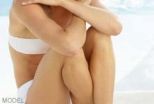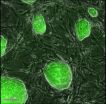(Press-News.org) The internally-driven daily cycle of blood pressure changes doesn't appear to be linked to the known increase in morning heart attacks, according to a study in Circulation Research: Journal of the American Heart Association.
Researchers sought to identify the role of the internal human body clock in the daily rise and fall in blood pressure. In the study, three groups of volunteers showed an internal daily blood pressure variation with a peak at around 9 p.m. — independent of changes in activity and other behavioral influences that can affect blood pressure.
Increased blood pressure is a major risk factor for adverse cardiovascular events. However, the study revealed that the internal blood pressure cycle resulted in the lowest blood pressure occurring in the late morning. This unexpected finding indicates that blood pressure's internal circadian rhythm — a cycle of about 24 hours that occurs in many biological processes — is unlikely to be linked to the well-documented morning peak in heart events or strokes, said Steven A. Shea, Ph.D., lead author of the study and associate professor of medicine at Harvard Medical School in Boston, Mass.
"We used three complementary experimental protocols and three different groups and found essentially the same results," Shea said. "That means we're dealing with something very robust."
Shea and his colleagues randomized 28 volunteers without hypertension to three multi-day in-laboratory protocols. Before the study, participants maintained a regular sleep-wake schedule at home (16 hours of scheduled wakefulness with eight hours of scheduled sleep) for two to three weeks to stabilize circadian rhythms. They then underwent two baseline days and nights in the laboratory with the same sleep-wake schedule as at home, followed by a prolonged laboratory protocol designed to separate internal circadian effects from behavioral and environmental effects on blood pressure and other physiological variables. These controlled behavioral and environmental conditions included activity, posture, meals, sleep, room temperature, and light. The researchers measured core body temperature to track circadian time.
The three protocols, carried out in dim light to avoid resetting any of the body's circadian rhythms, included:
38-hour "constant routine," with continuous wakefulness and constant body posture.
196-hour "forced desynchrony" (forcing a sleep/wake cycle to conflict with participants' normal pattern) consisting of recurring 28-hour sleep/wake cycles with 18 hours, 40 minutes awake and 9 hours, 20 minutes asleep.
240-hour "forced desynchrony" with twelve recurring 20-hour sleep/wake cycles.
All three protocols revealed almost identical systolic and diastolic circadian rhythms, which were unrelated to other internal rhythms that are known to influence cardiovascular events, such as increases in sympathetic nervous system activity.
The reason for the peak in heart attacks and strokes in morning hours remains unexplained by these findings, but could certainly be related to the activities that normally occur on a regular daily basis. "For example, other recent work by our group indicates that the body clock interacts with behaviors, such as exercise, to cause an exaggerated increase in cardiovascular risk markers during the biological morning," adds Frank A. Scheer, Ph.D., co-author of the study and assistant professor of medicine at Harvard Medical School. It is possible that the evening peak in the internal circadian blood pressure cycle may help to explain a second, albeit less prominent increase in heart attacks that occurs in the evening, the researchers said.
"We now need to study people with different vulnerabilities and risk factors for cardiovascular disease," Shea said. "So far, we have studied very healthy people who don't have hypertension or the build-up of arterial plaques that could bring them closer to the theoretical threshold for precipitating an adverse cardiac event."
INFORMATION:
Other co-authors are Michael F. Hilton, Ph.D.; Kun Hu, Ph.D.; and Frank A.J.L. Scheer, Ph.D. Author disclosures and funding are on the manuscript.
Statements and conclusions of study authors published in American Heart Association scientific journals are solely those of the study authors and do not necessarily reflect the association's policy or position. The association makes no representation or guarantee as to their accuracy or reliability. The association receives funding primarily from individuals; foundations and corporations (including pharmaceutical, device manufacturers and other companies) also make donations and fund specific association programs and events. The association has strict policies to prevent these relationships from influencing the science content. Revenues from pharmaceutical and device corporations are available at www.americanheart.org/corporatefunding.
NR11 – 1060 (CircRes/Shea)
END
Virtual reality (VR) and other video games led to significant improvement in arm strength following stroke and could provide an affordable, enjoyable and effective way to intensify treatment, according research reported in Stroke: Journal of the American Heart Association.
Researchers analyzed seven observational and five randomized trials, representing a total of 195 patients, ages 26 to 88, who had suffered mild to moderate strokes.
Each study had investigated the effects of electronic games on upper arm strength and function.
In the observational studies, there ...
David Blair of QuadCap Wealth Management, LLC, recently spoke to a group of Dallas business owners regarding the necessity of withholding and/or estimated payments.
An excerpt of this talk follows: "The United States tax system is a pay-as-you-go system that requires taxpayers to pay as the income they are taxed on is earned. If you are paying your taxes throughout the year through withholding, you can increase this towards the end of the year to make up any shortfall. If you are self-employed however, you must make estimate payments throughout the year."
The first ...
SEATTLE—A video-based decision aid helped severely obese people to make more informed choices about bariatric surgery and reach more certainty about them, according to a trial involving 152 Group Health patients, e-published in Obesity in advance of print. This randomized controlled trial is the first to test shared decision making for weight-loss surgery.
Researchers randomly assigned half the patients to receive an educational booklet on bariatric surgery and half to watch the video-based decision aid. After three months, those who watched the video felt less conflicted ...
Dr. Lori Polacek (www.polacekplasticsurgery.com), a board-certified plastic surgeon, is now offering Exilis to patients at her plastic surgery practice in Rhode Island. Exilis, a completely non-surgical procedure that uses radiofrequency energy to heat and shrink underlying tissue, is one of the most innovative and sophisticated techniques for body sculpting and skin tightening in recent years.
"I'm excited to add Exilis to my practice, and I think my patients will share in my excitement once they see what this treatment can do - all without surgery," notes Dr. Polacek, ...
STANFORD, Calif. — People who use in vitro fertilization to conceive children often have leftover embryos and must decide whether to store them, dispose of them or possibly donate them for research. A new process developed by researchers at the Stanford University School of Medicine allows these people to make this decision in the privacy of their own homes — without any interaction with clinic personnel or scientists who might benefit from the research.
"There is concern that conflicts of interest and influence by researchers and clinicians may play a role in donor choice," ...
A paper published by Cell Press in the April 8th issue of the journal Cell Stem Cell reveals a new and more efficient method for reprogramming adult mouse and human cells into an embryonic stem cell-like state and could lead to better strategies for developing stem cells for therapeutic use.
The ability to reprogram adult cells into cells that resemble embryonic stem cells has tremendous potential for both stem cell research and regenerative medicine. "Previous studies have demonstrated the usefulness of iPSCs not only in the study of basic stem biology, but also in ...
PHILADELPHIA - Researchers at the University of Pennsylvania School of Medicine have devised a totally new and far more efficient way of generating induced pluripotent stem cells (iPSCs), immature cells that are able to develop into several different types of cells or tissues in the body. The researchers used fibroblast cells, which are easily obtained from skin biopsies, and could be used to generate patient-specific iPSCs for drug screening and tissue regeneration.
iPSCs are typically generated from adult non-reproductive cells by expressing four different genes called ...
Dr. Grant Stevens of Marina Plastic Surgery (www.marinaplasticsurgery.com) is seeing a rise in the popularity of facial plastic surgery procedures such as eyelid surgery and facelift in Los Angeles, but his practice is also seeing a dramatic jump in the number of nonsurgical facial rejuvenation procedures being performed. These nonsurgical procedures meet the demands of patients' busy schedules while helping them look their best and allowing them to remain on-the-go.
"My Los Angeles plastic surgery patients choose from a wide range of procedures," says Dr. Stevens, "and ...
We all know that people at opposite ends of the political spectrum often really can't see eye to eye. Now, a new report published online on April 7th in Current Biology, a Cell Press publication, reveals that those differences in political orientation are tied to differences in the very structures of our brains.
Individuals who call themselves liberal tend to have larger anterior cingulate cortexes, while those who call themselves conservative have larger amygdalas. Based on what is known about the functions of those two brain regions, the structural differences are consistent ...
Cave life is known to favor the evolution of a variety of traits, including blindness and loss of eyes, loss of pigmentation, and changes in metabolism and feeding behavior. Now researchers reporting online on April 7 in Current Biology, a Cell Press publication, have added sleeplessness to that list.
"Cave-adapted fish sleep less—much less—than closely related surface fish," said Richard Borowsky of New York University. "In some ways, their sleep phenotypes are similar to those of humans with sleep disorders."
The fish do sleep, but only for relatively short periods, ...



